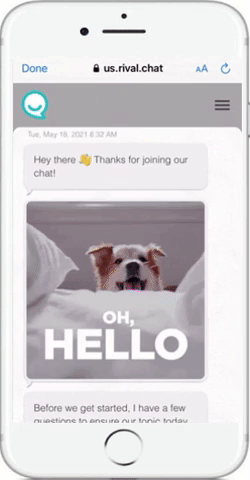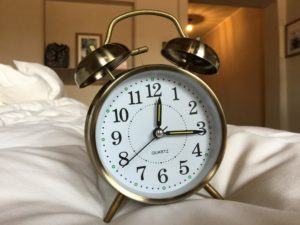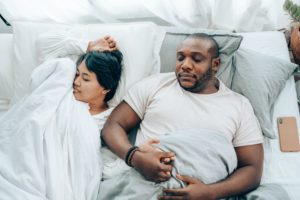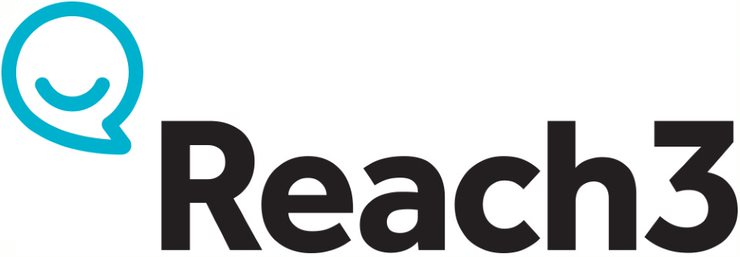TrendSpot: Connected Health
Gender Equality When it Comes to Sleep?
Keep on Dreaming
May 2021
Exclusive research from Reach3 Insights shows that the pandemic’s impact on sleeping patterns is uneven among genders

As part of our TrendSpot: Connected Health program, we recently used our conversational, mobile messaging-based technology and approach to engage n=519 Americans about their sleeping patterns.
Our methodology allowed us to capture authentic feedback from a diverse group of consumers, leveraging the natural capabilities of mobile to capture quant and qual data including videos.
Our research suggests the pandemic may be having a disproportionate impact on how women sleep versus how men sleep. Here’s a deeper look at our insights and what it means for companies in CPG, consumer health and wellness, tech and more.
How are People Sleeping These Days?
Despite having the same AMOUNT of sleep per night, women are more likely to say that the QUALITY of their sleep is poor and are more likely to look for ways to improve their sleep
On average, men sleep…
hours/night

On average, women sleep…
hours/night
%
of Men say their QUALITY of sleep is excellent / good

%
of Women say their QUALITY of sleep is excellent / good
%
of Men are looking to IMPROVE their sleep

%
of Women are looking to IMPROVE their sleep
What’s Impacting Quality of Sleep for Women?
Working During the Pandemic
For some women, working from home has added pressures and amplified stress…
62%
of women feel the pandemic has changed a lot / everything about work life
… vs. men who are less likely to feel an impact (54%) ?♂️
46%
of women are suffering from Zoom fatigue, feeling the pressure of having to perform
… vs. 25% of men ?♂️
… Add Parenting to the Mix
Among households with kids, stress is amplified by having to balance career and family all day…
%
of women are more STRESSED at work from having their kids at home
… compared to 34% of men
%
of women have had their ability to work DISRUPTED by school closures
… compared to 25% of men
Anxiety and stress caused by the pandemic is making it difficult to fall asleep in the first place and to have a restful sleep. For some, this is having a detrimental impact on their sleep health.
Let’s hear from them…
“My dreams these days are often filled with themes that are frustrating, anxiety provoking, or scary. I wake up with anxiety attacks sometimes.”
“The quality of sleep I get depends on my stress level when my head hits the pillow. So, it’s kind of like a maze. If I turn one way, it might be good and another way it might be bad.”
“It just seems that even though I’m trying to sleep, my mind keeps going non-stop. Thinking about what I did, what I could have done different, what I have to do, what I’m going to do, etc. I’m so exhausted all the time. I just have trouble shutting down.”
Regardless of gender or age, most tend to prefer more natural ? ways of improving their sleep…
Considerations for Improved Sleep…
Total
- Melatonin 37%
- Behavioral Change (e.g., Going to bed earlier) 34%
- Natural Sleep Aids / Supplements 30%
- Better Mattress 30%
- Temperature Control 26%
- Teas 25%
- Weighted Blankets 18%
- Medications (over-the-counter or prescriptions) 18%
- Humidifiers 15%
- Apps 12%
- Vapes 5%
- SAD Lamps 5%

Top Considerations for Improved Sleep Among…
Men
Melatonin ? (34%)
Behavioral changes ? (33%)
Natural sleep aids / supplements ? (32%)
Better matress ? (31%)
Women
Melatonin ? (39%)
Behavioral changes ? (35%)
Teas ? (32%)
18-34 years
Behavioral Changes ⏲ (37%)
Melatonin ? (31%)
Better matress ? (31%)
35-54 years
Behavioral Changes ⏲ (41%)
Melatonin ? (36%)
Better matress ? (34%)
Natural sleep aids / supplements ? (34%)
55+ years
Melatonin ? (44%)
Natural sleep aids / supplements ? (28%)
Better matress ? (26%)
Teas ? (25%)
Behavioral changes ? (25%)
Temperature control ? (25%)
So, what do our findings mean for your brand?
Here are 3 tips to consider…
UNDERSTAND TARGET AUDIENCE:
Identify nuances in the motivations and behaviors of your target audience – especially women – to best meet their needs
ONGOING AGILE RESEARCH:
Run an ongoing research program to keep track of how sleeping routines change as seasons change or as women move to different phases of life
TEST NEW INNOVATION:
Conduct mobile-based missions, mobile diaries, & new ideas including apps to find whitespace opportunities. Get deeper context by combining robust quant data with rich qual inputs (including videos) from real customers in real time
What’s this all about?
Connected Health is an ongoing Reach3 initiative that leverages agile conversational methods to provide you with pulse insights into how consumers are connecting with their health in different ways now and in the future.
In the weeks ahead, we’ll cover beauty & self-care routines, new products / innovations, and more!
If you have questions about these themes or other Health, Wellness & Beauty topics, click here to submit them through our website and we’ll do our best to include them in our next chat.
Fine Print:
Field dates 2/9/2021 – 2/12/2021, Base: n=519 total
To learn more about our ‘Future of Work’ work, click here
Curious to know more?
Email dara@reach3insights.com or
use the Contact button below.

www.reach3insights.com
info@reach3insights.com // SMS: (833) 4Reach3 // Phone: (833) 4Reach3
